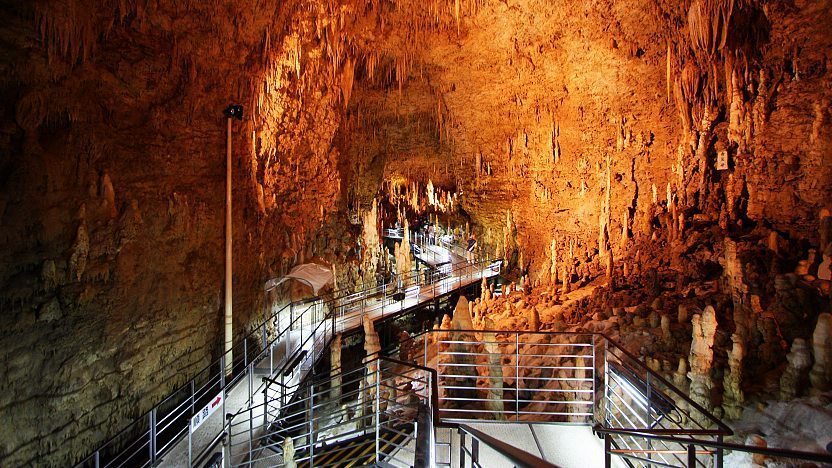The Japanese islands of Okinawa were once part of the ancient Ryukyu Kingdom.
From the 14th Century onwards, The Ryukyu Kingdom played an essential role in the maritime trade of the region as they acted as middlemen between China, Taiwan and Japan.
Famously, The Ryukyuans were “friends of all and enemies of none” yet nevertheless recognised the need to be able to protect themselves. As such they developed their own form of self-defence, and today many Karate followers like to visit this “Home of Karate”.
Today, Okinawa has a distinctly different feel to the rest of Japan and has some rather unique cultural, historical and natural wonders.
Here are just some of the things we love about Okinawa.
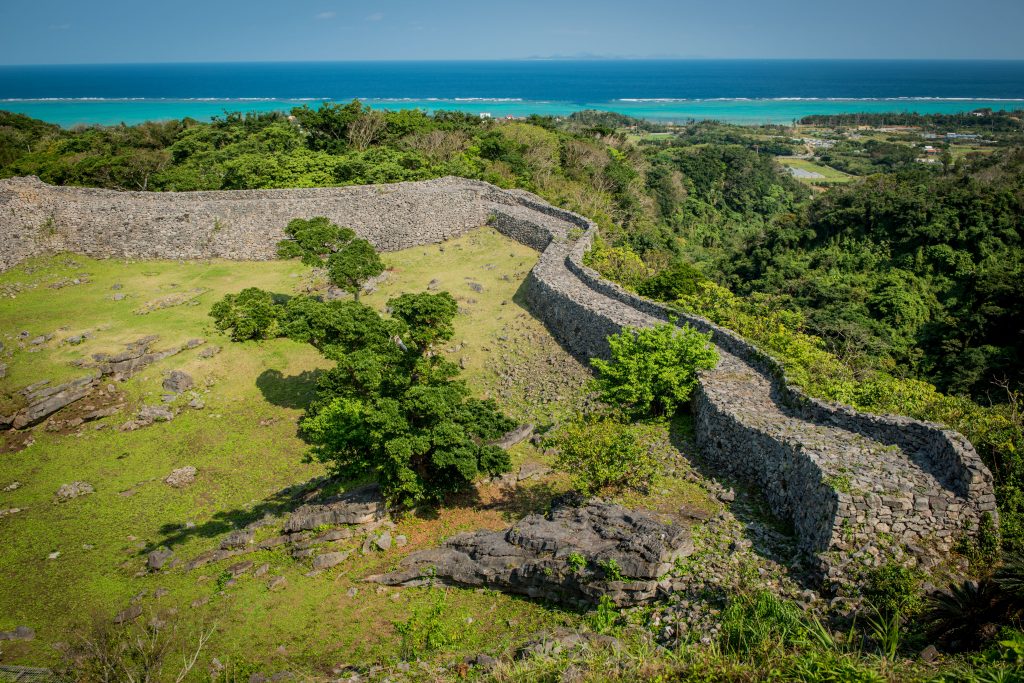
The Food; like Goya Champuru
Okinawa offers an incredible treat for your tastebuds and for the most part, the food is incredibly healthy too. Quite different from the food throughout the rest of Japan, you will love the cuisine here.
Some things you should try include: Okinawa Bitter Melon, Umi Budo (Sea Grapes), Rafute (pork dish), Goya Champuru (Bitter Melon, Tofu, egg and ham), Mimiga (sliced pigs ear) and finally the simply awesome; Salt Ice Cream!
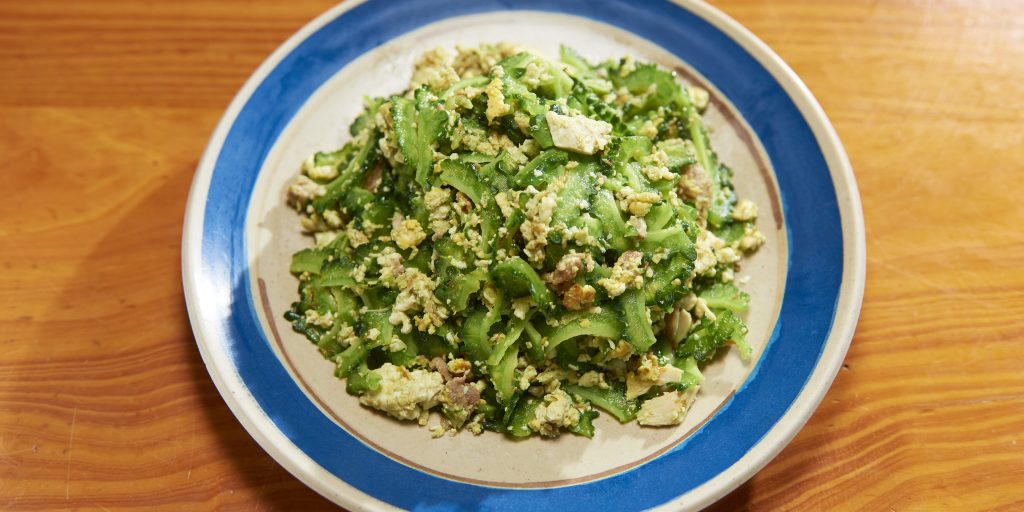
Okinawan Shisa
A traditional Ryukyuan cultural decoration which is a cross between a lion and a dog, Shisa can be found everywhere in Okinawa from the pillars of gateposts, on the roofs of houses and at the entrances of most buildings.
Traditionally, the Shisa can always be found in pairs, one with it’s mouth open to suck in the evil spirits and the other with it’s mouth closed to prevent the good spirits leaving.
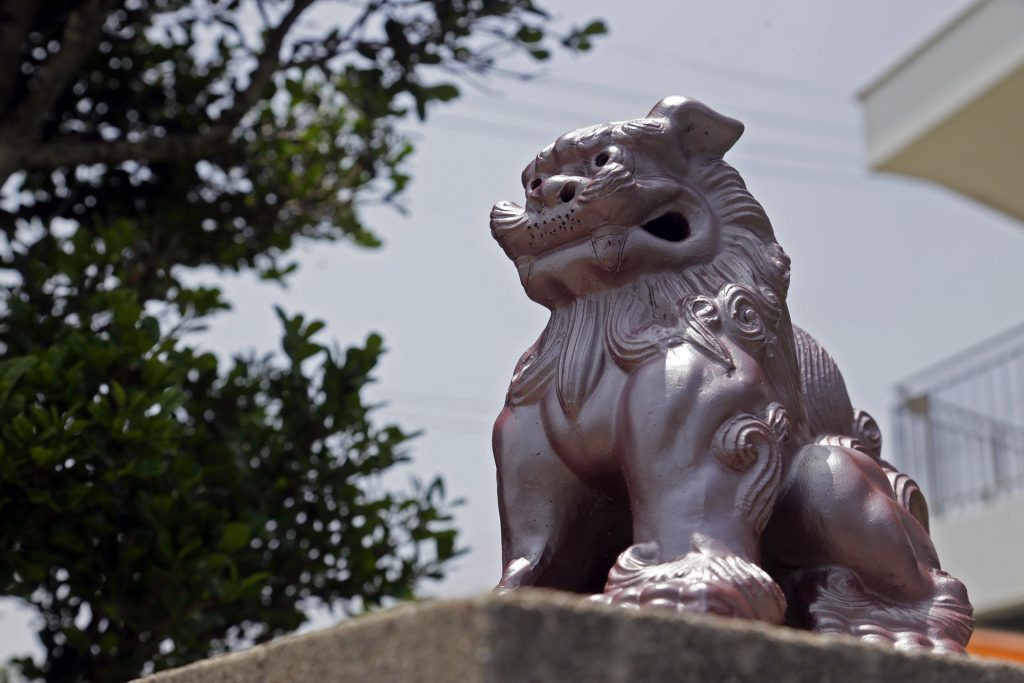
Ryukyu Glass
Okinawa and its manufacturing — including a small number of glass makers — were devastated during World War II. The craftspeople who returned to rebuild often found little more than rubble and were forced to make use of whatever materials were available.
As the stories go, Okinawans began collecting the bottles discarded by occupying U.S. troops. Some say it was Coca-Cola bottles tossed from ships, though it’s just as likely the island’s large number of military bases also produced a steady stream of cast-off glass containers.
The bottles were melted down and re-blown into a unique type of recycled glassware.
Since the war, the Okinawan art of glass-making has been refined and has blossomed into one of the island’s proudest traditions. The local craft now attracts interest among visitors from across Asia and the world with exceptionally skilled pieces selling for thousands of dollars.
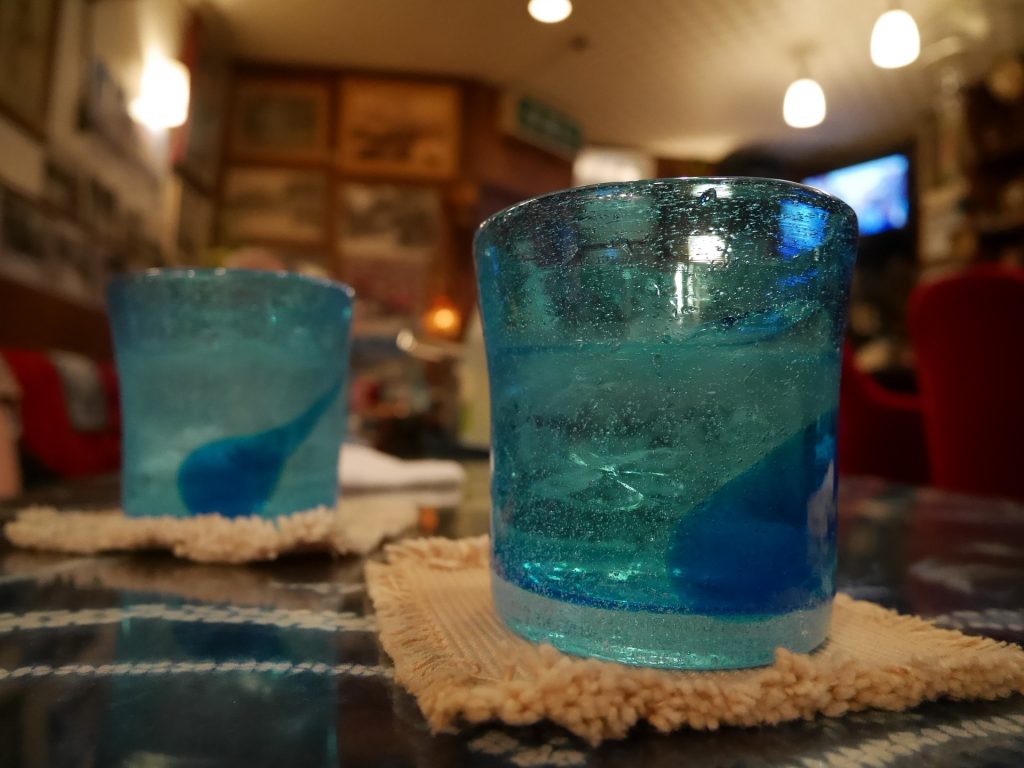
The Sanshin (“three strings”)
This is a traditional Okinawan musical instrument which is often likened to a banjo, and consists of a snakeskin-covered body, long neck and three strings.
The Sanshin is considered the soul of Okinawan folk music, the ‘heart’ of the Ryukyu people. It is to Okinawa what the guitar is to the Western World and what the Ukulele is to Hawaii. Played by all age groups in Okinawa from 2 years to 100 year olds, there is a Sanshin in most Okinawan homes and it is the centre of small informal family gatherings, weddings, birthdays, community parties, and festivals.
The Sanshin is held in great respect among the Ryukyu culture and the sound from the Sanshin is essentially the sound of Okinawa.
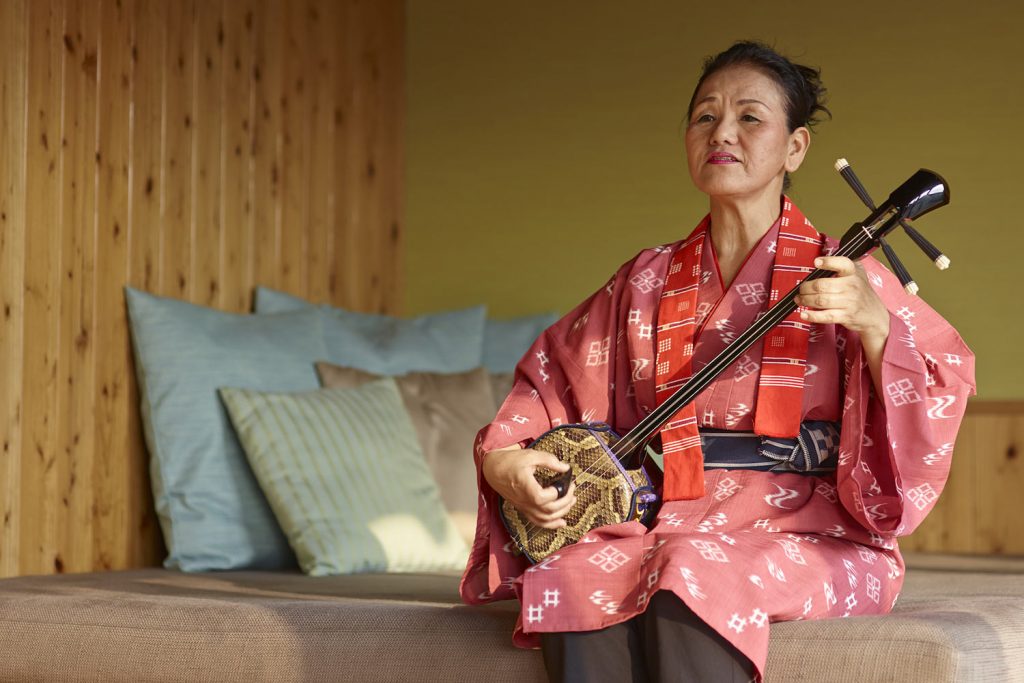
Awamori
With a history of over 600 years, Awamori is Japan’s oldest distilled liquor, and one that has a deeply rooted culture which very few drinks in the world can pride themselves with.
This distilled rice based drink brings families and friends together in Okinawa in a way that no other drink can do. The tiny Chibuguwa are a type of Ochoko (sake cup), which were used to traditionally drink awamori slowly, sip by sip, while enjoying everyone’s conversation. The cups are so small that the group needs to come close together when having a toast, almost to the point of bumping their heads into each other. Unlike wine and beer whose large glasses give a sense of distance from each other, awamori’s sake cups bring Okinawans together.
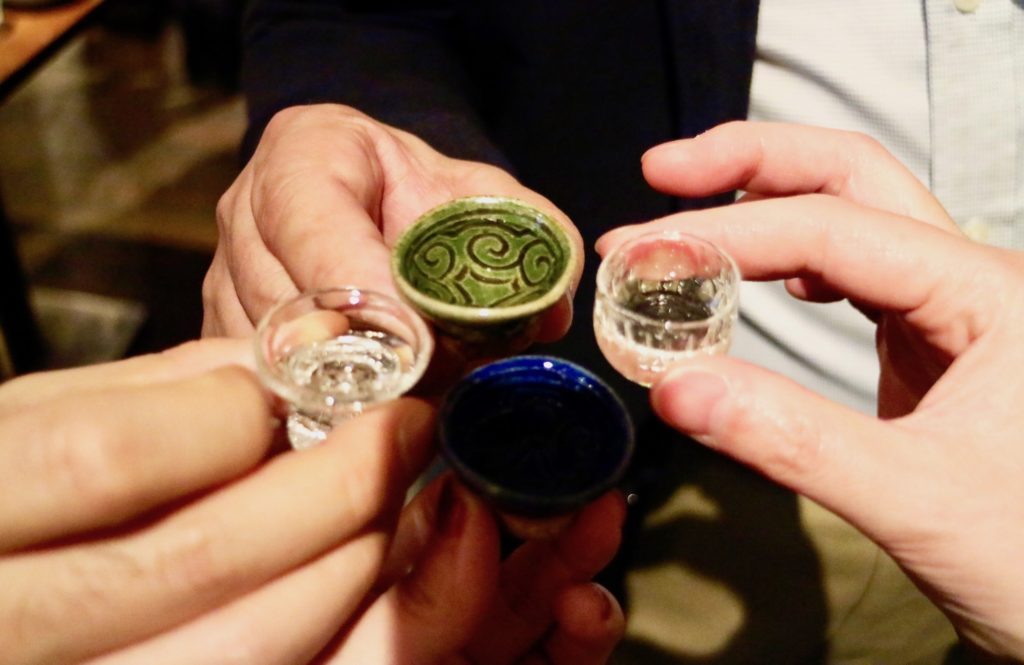
Okinawa Ocean Expo Park
The Ocean Expo Park is a large park on the tip of the Motobu Peninsula in northern Okinawa which was built in 1976 to commemorate the Okinawa International Ocean Expo held there.
The park’s main attraction is the Churaumi Aquarium, Japan’s finest aquarium and the only aquarium in the world large enough to house whale shark.
The park stretches about 3km along the coast and is so extensive that small shuttle buses operate between the park’s attractions at least twice per hour and for 200 yen for a 1-day pass or 100 yen for a one way journey. The various sites and facilities include: Tropical Arboretum, Tropical Dream Centre, Traditional Okinawa Village, Oceanic Culture Museum and Okinawa Churaumi Aquarium. All sites are connected by attractive walking paths and it’s a fascinating, educational and fun day out for all ages.
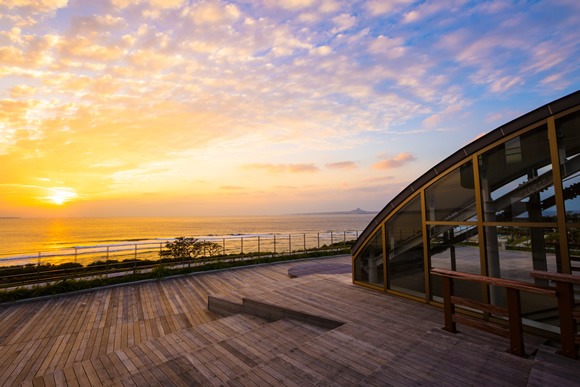
Okinawa World
Okinawa World is a theme park all about Okinawan culture. The park’s main attractions are a massive natural cave, an arts and craft village and a snake museum.
The Gyokusendo Cave runs for 5km and is the longest of the many caves in the south of Okinawa Island and the second longest cave in the entire country. 850m of the cave are open to the public and feature spectacular stalactites and stalagmites. The inside of the cave is well maintained and the walking paths are comfortable and well lit. It’s also a pleasant “cool” escape from the heat of the day.
The Kingdom Village is a superb replica of a traditional Ryukyu village with workshops inviting visitors to try their hand at a variety of traditional Okinawan crafts, such as weaving, dyeing, paper making, pottery, sugar cone processing, the making of musical instruments and the more recently introduced glass blowing. Hands-on experiences are offered at many of the workshops.
It’s a fun and educational day out but don’t expect “rides” like at the theme parks back home!
Okinawa is a truly wonderful and peaceful destination and provides a great “tropical” add-on to your Japanese trip. Find out more about the unique culture of this ancient Ryukyu Kingdom in our podcast which we recorded live at ITB with our friends from Okinawa.
